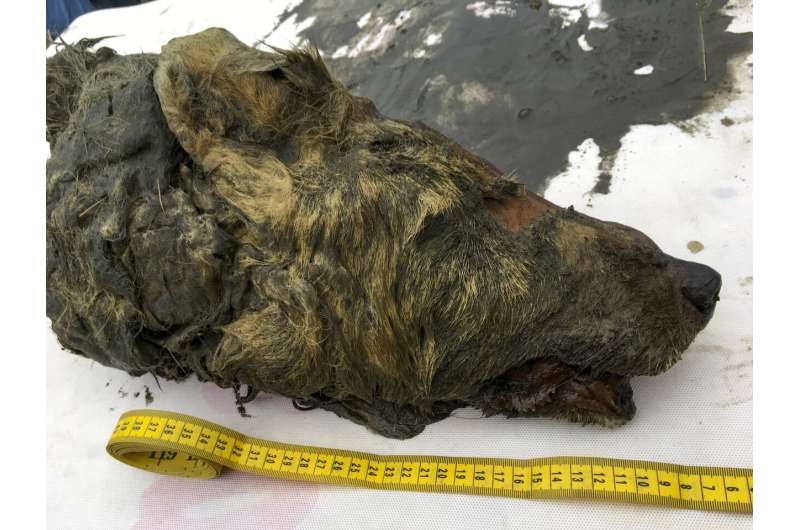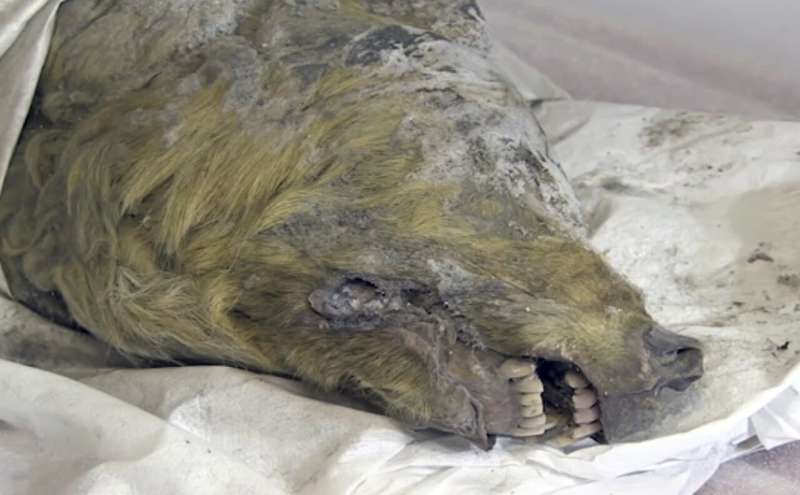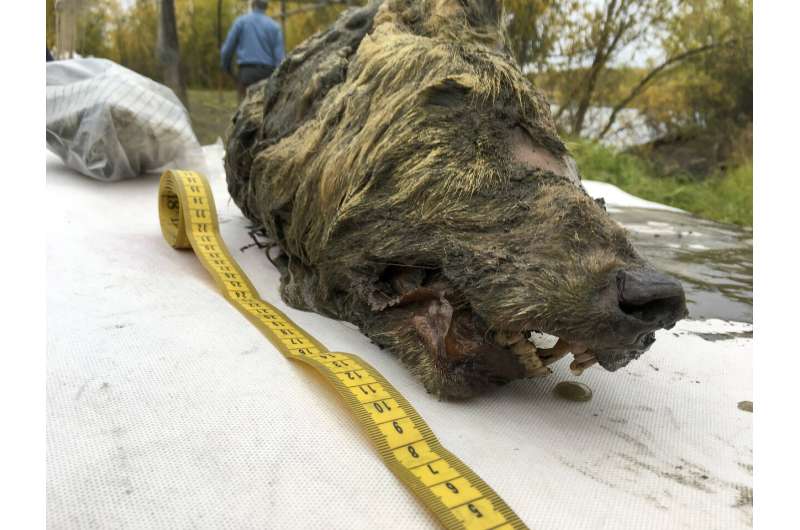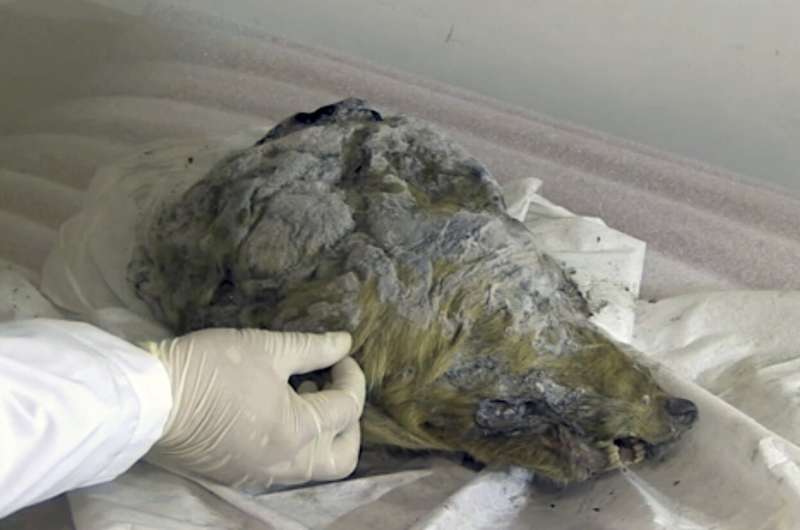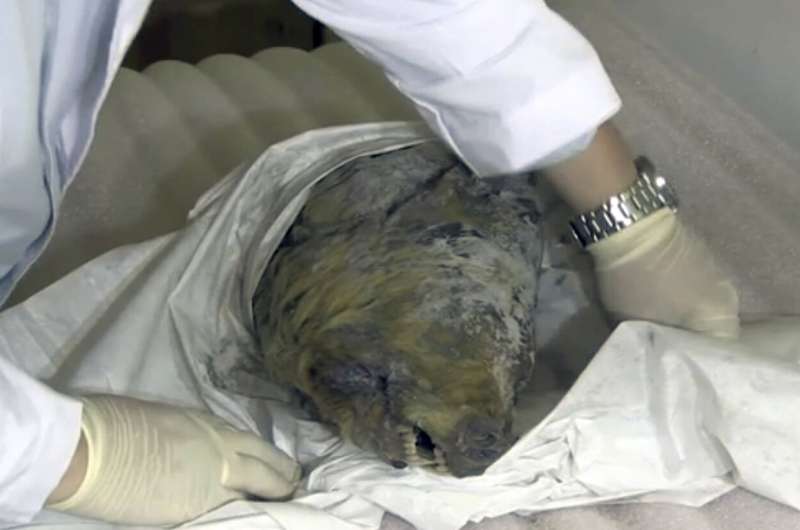In this Sept. 6, 2018, photo, the head of an Ice Age wolf is seen after it was found during an expedition of the Mammoth Fauna Study Department at the Academy of Sciences of Yakutia near Belaya Gora, Abyysky region of Sakha Republic, Russia. Experts believe the wolf roamed the earth about 40,000 years ago, but thanks to Siberia's frozen permafrost its brain, fur, tissues and even its tongue have been perfectly preserved, as scientific investigations are underway after it was found in August 2018. (Albert Protopopov/Mammoth Fauna Study Department at the Academy of Sciences of Yakutia via AP)
Russian scientists have found the furry head of an Ice Age wolf perfectly preserved in the Siberian permafrost.
The head of a wolf, which died 40,000 years ago, was discovered in the Russian Arctic region of Yakutia.
Valery Plotnikov, a top researcher at the local branch of the Russian Academy of Sciences, said the animal belonged to an ancient subspecies of wolf that lived at the same time as the mammoths and became extinct alongside them. Scientists said it was an adult, about 25% bigger than today's wolves, but did not say whether it was male or female.
Plotnikov called the discovery unique because scientists previously only had found wolf skulls without tissues or fur, while this head has ears, a tongue and a perfectly preserved brain.
-
The head of an Ice Age wolf, at the Mammoth Fauna Study Department at the Academy of Sciences of Yakutia, Russia, June 10, 2019. Experts believe the wolf roamed the earth about 40,000 years ago, but thanks to Siberia's frozen permafrost its brain, fur, tissues and even its tongue have been perfectly preserved, as scientific investigations are underway after it was found in August 2018. (Valery Plotnikov/Mammoth Fauna Study Department at the Academy of Sciences of Yakutia via AP)
-
In this Sept. 6, 2018, photo, the head of an Ice Age wolf is seen after found during an expedition of the Mammoth Fauna Study Department at the Academy of Sciences of Yakutia near Belaya Gora, Abyysky region of Sakha Republic, Russia. Experts believe the wolf roamed the earth about 40,000 years ago, but thanks to Siberia's frozen permafrost its brain, fur, tissues and even its tongue have been perfectly preserved, as scientific investigations are underway after it was found in August 2018. (Albert Protopopov/Mammoth Fauna Study Department at the Academy of Sciences of Yakutia via AP)
-
Valery Plotnikov, Chief Researcher of the Mammoth Fauna Study Department at the Academy of Sciences of Yakutia, Russia, inspects the head of an Ice Age wolf, June 10, 2019. Experts believe the wolf roamed the earth about 40,000 years ago, but thanks to Siberia's frozen permafrost its brain, fur, tissues and even its tongue have been perfectly preserved, as scientific investigations are underway after it was found in August 2018. (Valery Plotnikov/Mammoth Fauna Study Department at the Academy of Sciences of Yakutia via AP)
-
Valery Plotnikov, Chief Researcher of the Mammoth Fauna Study Department at the Academy of Sciences of Yakutia, Russia, unwraps the head of an Ice Age wolf, June 10, 2019. Experts believe the wolf roamed the earth about 40,000 years ago, but thanks to Siberia's frozen permafrost its brain, fur, tissues and even its tongue have been perfectly preserved, as scientific investigations are underway after it was found in August 2018. (Valery Plotnikov/Mammoth Fauna Study Department at the Academy of Sciences of Yakutia via AP)
© 2019 The Associated Press. All rights reserved.
